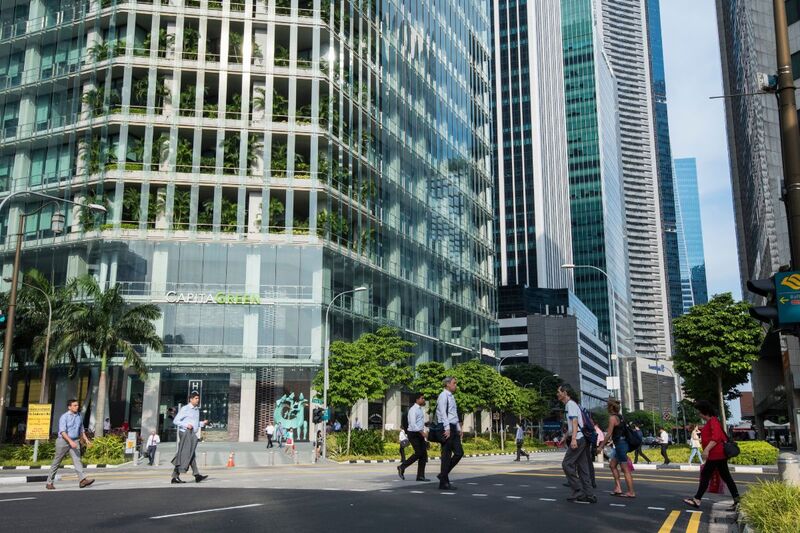Stronger Than Expected: What Singapore’s Q3 2025 Labour Market Means for Companies and Workers

This article is written in English for readers in Singapore. Chinese and Japanese translations are available on our website.
Singapore’s latest labour market data for the third quarter of 2025 paints a picture of resilience and cautious optimism. Despite early forecasts of slower growth, the Ministry of Manpower’s (MOM) Labour Market Advance Release showed stronger-than-expected hiring momentum, low unemployment, and stable retrenchment levels.
For both companies and professionals, the findings signal a steady economy with pockets of opportunity — though challenges remain across outward-oriented sectors such as Information & Communications and Professional Services.
Headline Findings at a Glance
According to MOM’s preliminary figures for Q3 2025:
- Total employment grew by 24,800, a notable rise from 10,400 in Q2 2025 and 22,300 in Q3 2024.
- Unemployment rates remained low — 2.0% overall, 2.8% for residents, and 3.0% for citizens.
- Retrenchments held steady, with 3,500 workers affected (1.4 per 1,000 employees).
- Hiring sentiment improved modestly, with 44.1% of firms planning to hire in Q4 2025.
- Wage-increase expectations dipped, with only 19.3% of firms indicating pay raises.
- Economic growth stood at 2.9% year-on-year, moderating from 4.5% in Q2 2025.
The data suggests that Singapore’s labour market remains healthy but uneven, with employers balancing manpower needs against productivity and cost pressures.
For Employers: Planning Ahead with Confidence
1. Renewed Hiring Momentum
The rebound in employment, particularly among both residents and non-residents, indicates improving labour demand. Sectors such as Construction and Manufacturing saw continued growth in non-resident roles, while Financial Services and Health & Social Services led resident employment gains.
For HR and business leaders, this is the time to recalibrate workforce plans and secure critical talent ahead of anticipated competition in early 2026.
2. Managing Wages and Productivity
With fewer firms planning salary increments, wage pressures appear to be stabilising. Employers can use this breathing space to invest in upskilling, job redesign, and productivity improvements. Programmes such as the Career Conversion Programme (CCP), Mid-Career Pathways Programme, and Productivity Solutions Grant – Job Redesign (PSG-JR) remain key levers to strengthen workforce capabilities without excessive cost.
3. Addressing Sector-Specific Challenges
Outward-oriented sectors — including Information & Communications, Wholesale Trade, and Professional Services — continue to experience mixed employment outcomes. Businesses in these areas should explore diversification, automation, and cross-training to stay agile in the face of external market uncertainty.
4. Building Long-Term Talent Resilience
Rather than focusing solely on short-term hiring, employers are encouraged to adopt a skills-based approach. Reviewing internal competencies, offering training allowances, and using government credits such as the SkillsFuture Enterprise Credit can help companies develop future-ready teams while enhancing retention.
For Workers and Job-Seekers: Staying Competitive in a Shifting Market
1. Low Unemployment, but Uneven Opportunity
Singapore’s overall unemployment rate of 2.0% suggests that jobs remain available, though demand varies by industry. Professionals with skills in finance, healthcare, engineering, or digital operations are likely to remain in high demand, while others may need to pivot to emerging growth areas.
2. Prioritising Skills and Career Health
With wage growth slowing, the best way to future-proof your career is to focus on skills enhancement. The Career Health SG initiative encourages Singaporeans to take charge of their career development, while SkillsFuture Level-Up and MyCareersFuture provide access to learning and job-matching resources.
3. Support for Graduates and Mid-Career Job-Seekers
Fresh graduates can benefit from the Graduate Industry Traineeships (GRIT) programme, which provides work placements across multiple industries. Meanwhile, the SkillsFuture Jobseeker Support scheme — offering up to S$6,000 over six months — continues to help those who are involuntarily unemployed and actively searching for new roles.
4. Adapting to Change
As technology and market conditions evolve, flexibility is becoming just as important as technical expertise. Workers who demonstrate adaptability, learning agility, and cross-disciplinary capability will have a clear advantage in the coming year.
Strategic Takeaways
Singapore’s Q3 2025 labour data reveals a stable yet evolving landscape. Employment is growing, retrenchments are contained, and unemployment remains comfortably low. However, the moderation in wage growth and sector-specific slowdowns suggest that resilience must be built through productivity, innovation, and skills renewal — not just hiring numbers.
For employers, the next step is to strengthen internal pipelines, build inclusive and agile teams, and use available support schemes effectively. For workers, now is the time to upskill, explore growth industries, and align personal development with future labour trends.
Frequently Asked Questions (FAQ)
Q1. What does the 24,800 employment growth figure mean for job-seekers?
It shows that Singapore’s job market expanded in Q3 2025, creating more opportunities across key industries. Job-seekers can expect stable hiring activity, especially in essential and service-driven sectors.
Q2. Is wage growth slowing in Singapore?
Yes. Only about 19.3% of companies plan to raise wages in the near term, signalling moderation as firms focus on cost management and productivity gains.
Q3. Are retrenchments a concern?
No. Retrenchments remained low and stable at 3,500 workers, indicating that companies are not pursuing large-scale job cuts.
Q4. What government support is available for companies and workers?
Employers can tap on CCP, Mid-Career Pathways, PSG-JR, and SkillsFuture Enterprise Credit. Workers and job-seekers can explore SkillsFuture Level-Up, Career Health SG, and the GRIT programme for graduates.
Q5. What’s next for the labour market in 2026?
Employment is expected to stay positive but uneven. Wage growth will likely remain moderate, making productivity and innovation key differentiators for both employers and employees.
How Reeracoen Can Help
Looking to attract skilled professionals in manufacturing, engineering, or high-tech industries?
Let Reeracoen help you identify and secure the right talent.
Ready to advance your career or explore new roles in Singapore? Submit your profile today to connect with leading employers.
✅ Final Author Credit
By Valerie Ong (Regional Marketing Manager)
Published by Reeracoen Singapore — a leading recruitment agency in APAC.
Related Articles
- Upskilling in the Age of AI & Green Jobs
- Navigating Economic and Tech Signals in 2025: What Singapore’s Job Market Reveals
- Why a Master’s Degree is Your Game-Changer in Singapore’s Competitive Career Landscape
References
1. Ministry of Manpower. Labour Market Advance Release – Third Quarter 2025
2. Ministry of Trade and Industry. Economic Performance of Singapore in Q3 2025
3. SkillsFuture Singapore. SkillsFuture and Workforce Development Initiatives
4. Workforce Singapore. Career Health SG and GRIT Programmes

Disclaimer:
The information provided in our blog articles is intended for general informational purposes only. It is not a substitute for professional advice and should not be relied upon as such.
While we strive to provide accurate and up-to-date information, the ever-evolving nature of certain topics may result in content becoming outdated or inaccurate over time. Therefore, we recommend consulting with qualified professionals or experts in the respective fields for specific advice or guidance. Any actions taken based on the information contained in our blog articles are solely at the reader's discretion and risk. We do not assume any responsibility or liability for any loss, damage, or adverse consequences incurred as a result of such actions.
We may occasionally provide links to external websites or resources for further information or reference. These links are provided for convenience and do not imply endorsement or responsibility for the content or accuracy of these external sources. Our blog articles may also include personal opinions, views, or interpretations of the authors, which do not necessarily reflect the views of our organisation as a whole. We encourage readers to verify the accuracy and relevance of information presented in our blog articles and to seek professional advice when needed. Your use of this website and its content constitutes acceptance of this disclaimer.



